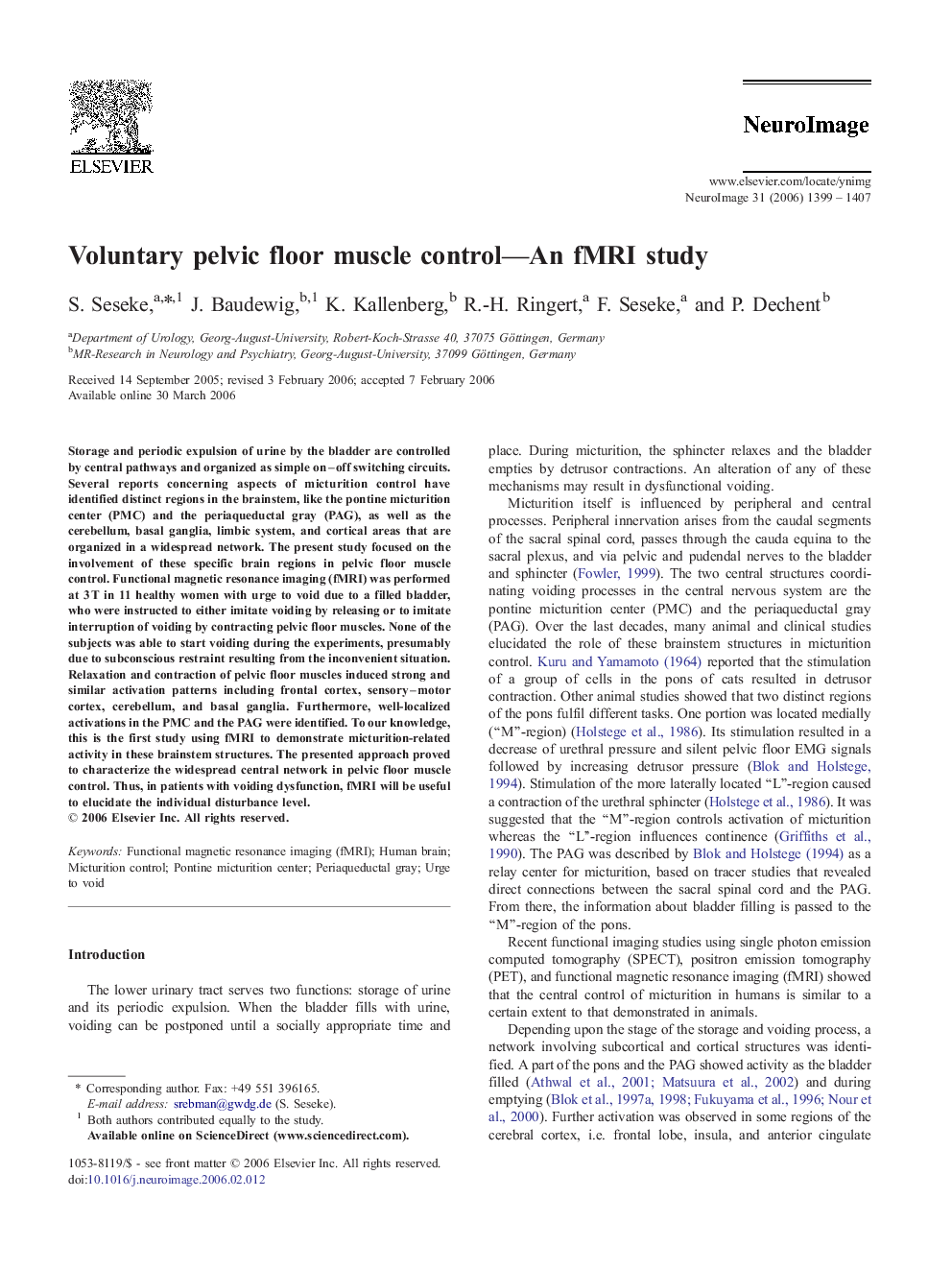| Article ID | Journal | Published Year | Pages | File Type |
|---|---|---|---|---|
| 3073953 | NeuroImage | 2006 | 9 Pages |
Storage and periodic expulsion of urine by the bladder are controlled by central pathways and organized as simple on–off switching circuits. Several reports concerning aspects of micturition control have identified distinct regions in the brainstem, like the pontine micturition center (PMC) and the periaqueductal gray (PAG), as well as the cerebellum, basal ganglia, limbic system, and cortical areas that are organized in a widespread network. The present study focused on the involvement of these specific brain regions in pelvic floor muscle control. Functional magnetic resonance imaging (fMRI) was performed at 3 T in 11 healthy women with urge to void due to a filled bladder, who were instructed to either imitate voiding by releasing or to imitate interruption of voiding by contracting pelvic floor muscles. None of the subjects was able to start voiding during the experiments, presumably due to subconscious restraint resulting from the inconvenient situation. Relaxation and contraction of pelvic floor muscles induced strong and similar activation patterns including frontal cortex, sensory–motor cortex, cerebellum, and basal ganglia. Furthermore, well-localized activations in the PMC and the PAG were identified. To our knowledge, this is the first study using fMRI to demonstrate micturition-related activity in these brainstem structures. The presented approach proved to characterize the widespread central network in pelvic floor muscle control. Thus, in patients with voiding dysfunction, fMRI will be useful to elucidate the individual disturbance level.
